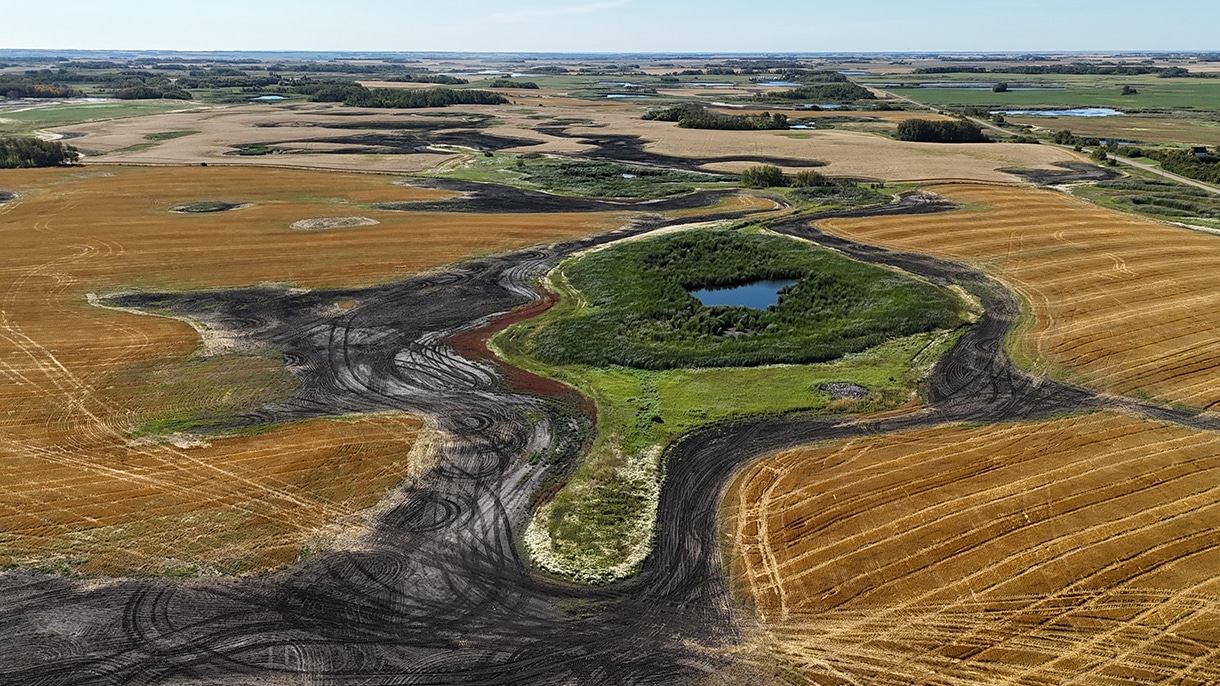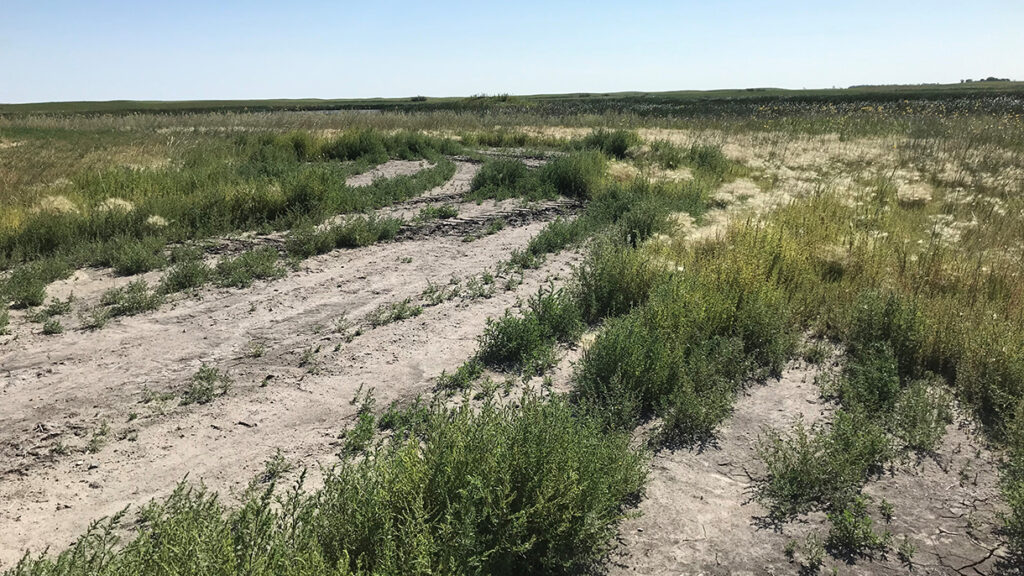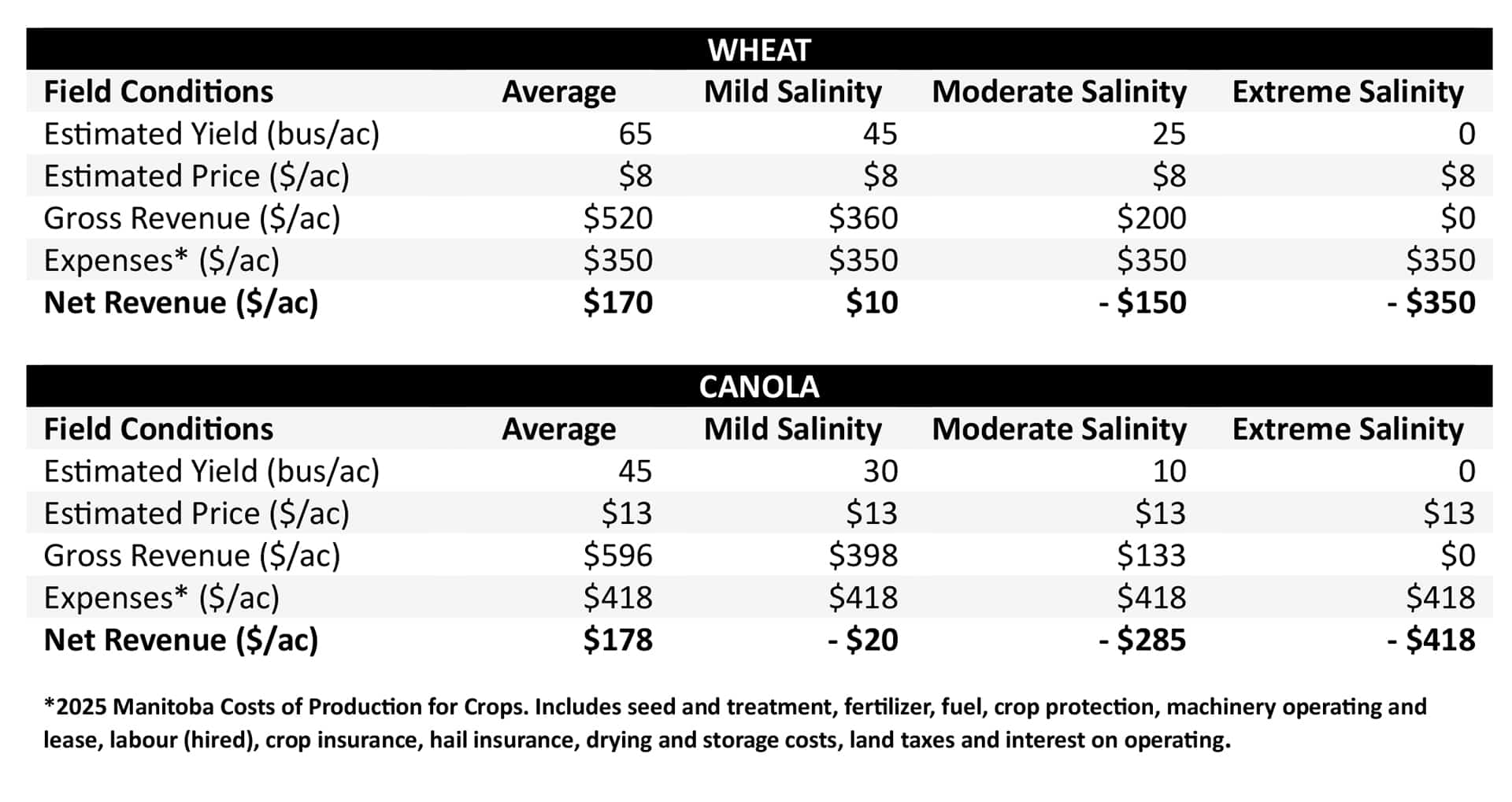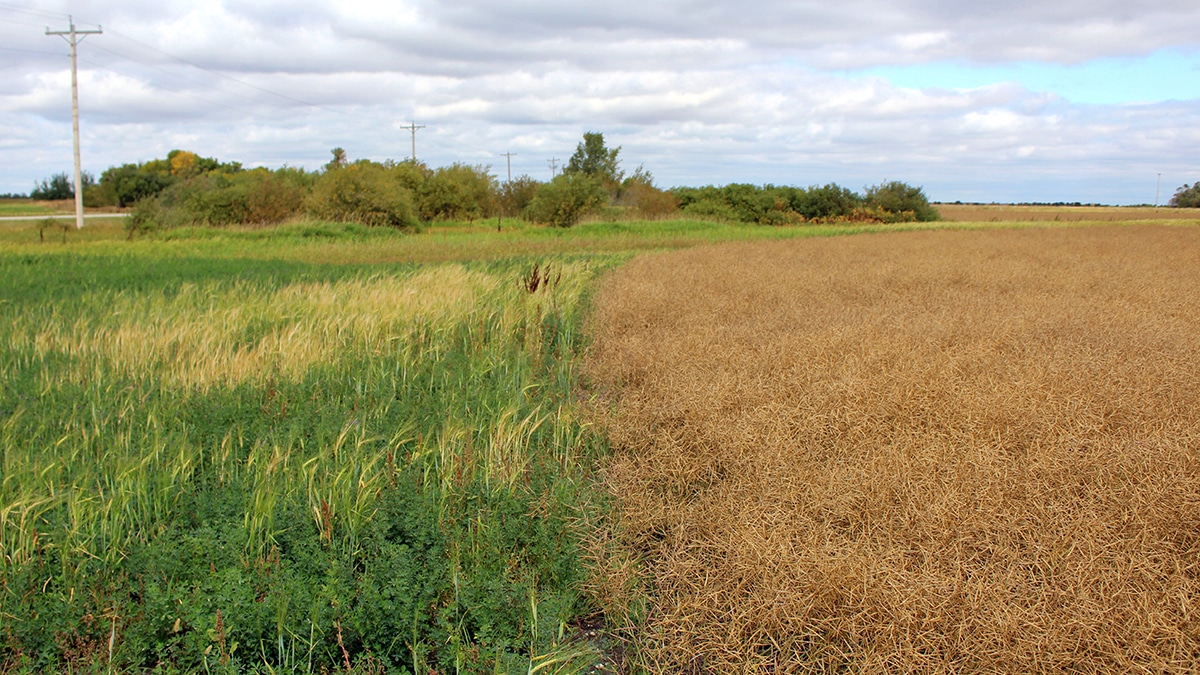News
February 7, 2025
Marginal acres are a revenue killer
Stop seeding wheat and canola into saline patches

Most farmers in southwest Manitoba contend with marginal acres – sometimes as much as 20 percent of their land – where the crops grown on those acres won’t pay for the input costs.
“The numbers are higher than you might expect,” says Sam Robinson, a research scientist who studies sustainable agriculture for Ducks Unlimited Canada (DUC). “Common causes of marginal acres are too much or too little water, extra salinity and soil compaction. Weeds are another big one.”
Marginal acres can reduce your farm’s overall crop yield and profit margin. Using data from Manitoba Agriculture’s 2025 Cost of Production Guide, DUC is urging farmers to address unproductive patches and get a better return on investment (ROI) in the process.
"A farmer seeding wheat or canola into extreme saline areas could lose up to $418 per acre. Fortunately, seeding those marginal areas to forages is a proven way to fix saline and weed issues. Plus, the forages can be used for livestock feed or sold, which increases the profitability of that land."
Appleyard worked with 48 farmers in southwest Manitoba in the last crop year to rehabilitate more than 1,200 acres through DUC’s Marginal Areas Program. Those producers pocketed nearly $200,000 in program incentive payments.
“DUC offers Manitoba farmers $200 per acre to seed marginal acres to forage,” says Robinson, “so there’s an economic incentive. The environment also benefits because the new growth will provide habitat for birds and increase biodiversity. The ultimate goal is to have a stand that establishes well and holds its ground against the common problems.”
Research shows that marginal areas require a specialized approach. For instance, battling weeds in marginal areas with more chemical is a financial drain and can lead to even more problems like herbicide resistance.
“We’re seeing herbicide resistance in kochia across the prairies,” notes Robinson, who is currently involved in a $7.6 million research project to identify sustainable, profitable and productive farming practices. “Some farmers will even do a chemical fallow, tilling the soil and applying herbicides with strong residual effects. This costs more time and money. The better solution is to have permanent cover in place that will compete with the weeds. We find this is a successful long-term approach.”

Robinson says deep-rooted, salt-tolerant forages can also reduce salinity. The plant roots intercept salt-laden water before it can reach the soil surface, minimizing salinity in the immediate area and helping prevent the problem from spreading.
Appleyard says that even small decreases in crop yield can kill profits. Based on 2025 projections, operating costs for red hard spring wheat are $350 per acre. Assuming a return of $8 per bushel and an average yield of 65 bushels per acre, the profit is nearly $170 per acre. In mildly saline areas where the average yield drops to 45 bushels per acre, profit plummets to only $10 per acre after deducting input costs (see table for details on how salinity impacts profits in both wheat and canola). In areas plagued by moderate or extreme salinity, input costs outrun any potential return.

Rehabilitating weedy or saline patches will take time but getting cover on the land helps prevent salinity from expanding. And there is an immediate payoff; saving input costs that were being wasted on unproductive acres.
Register now for DUC’s Marginal Areas Program. Last year, the average payment to participating landowners was $5,500. DUC also provides on-farm agronomic advice. Call Daphne Appleyard at 204-861-2587 or find out more at ag.ducks.ca/program/marginal-areas-mb/.

